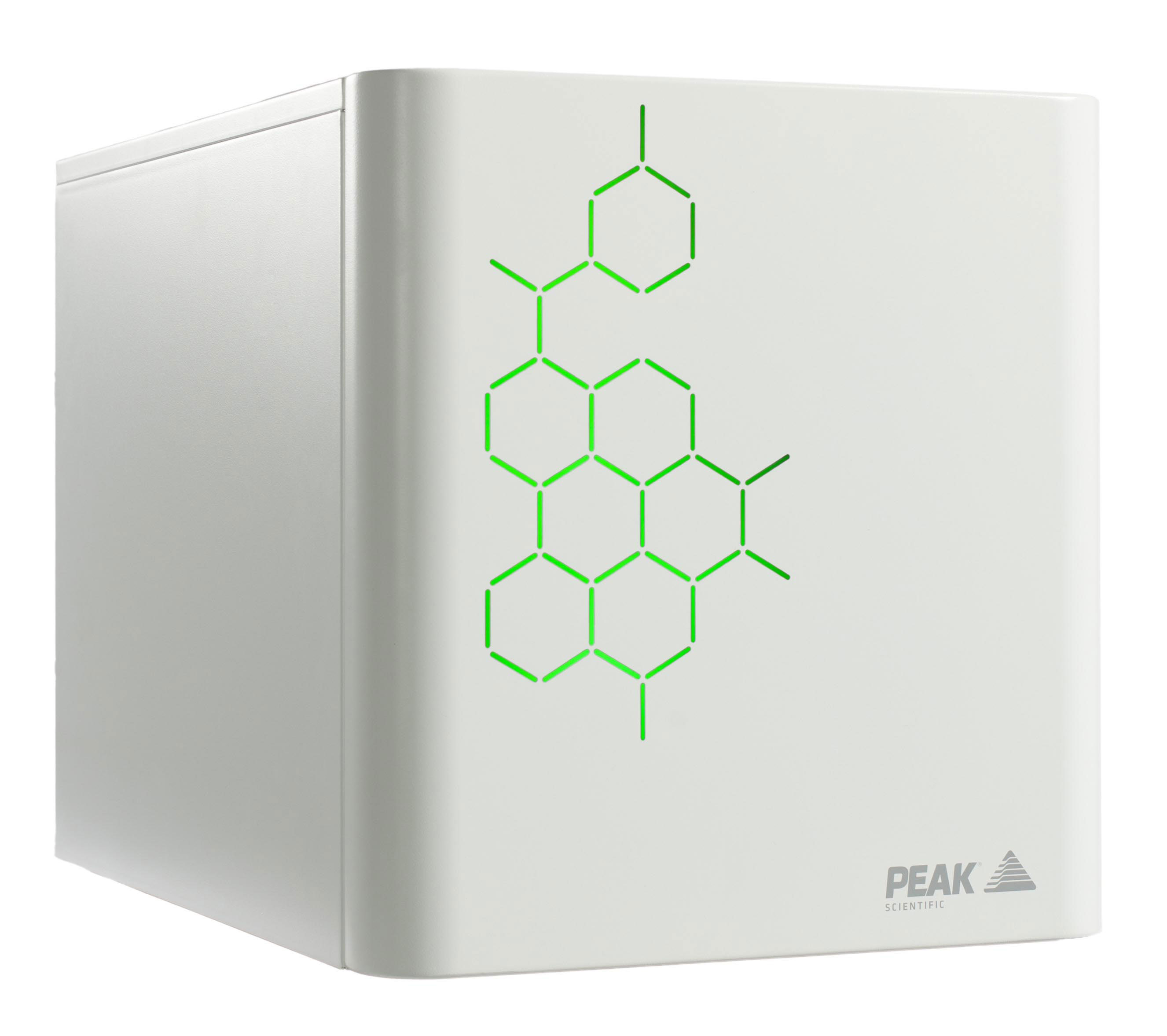The Precision Zero Air 30L generator is the newest addition to the Precision generator range and has been designed as a single source solution to support an entire lab’s zero air requirement for GC. Using a supply of compressed air either from a dry, oil-free in-house supply, or from a dedicated Precision compressor the generator can provide air to a number of detectors including flame ionisation detector (FID), flame photometric detector (FPD) and nitrogen-phosphorous detector (NPD).

Precision Zero Air 30L
Whether you require zero air for flame support in an FID or as an oxidizer in an NPD, the Precision Zero Air 30L has the capacity to support up to 100 detectors (assuming an air requirement of 300cc/detector) around the clock without any need to monitor the system, as is the case with cylinders. In GC detectors, Zero air is mixed with hydrogen to create a gas mixture which is used to burn a flame, or to produce plasma, depending on the detector.
The removal of methane ensures that detectors that are particularly sensitive to hydrocarbons, such as the FID, will have a lower, more stable baseline compared to systems using compressed air.
To ensure a low, stable baseline, the Precision Zero Air 30L has filters to remove particulates over 0.01 µm in diameter and a catalyst chamber that removes methane down to a level below 0.05ppm. The catalyst chamber is completely regenerative and is designed to last for the lifetime of the generator. Maintenance of the generator is restricted to an annual filter change, which can be done by the customer, or can be replaced onsite by one of Peak’s many field service engineers.

Ed Connor DR.SC. is GC-MS Application Specialist, Peak Scientific, Inchinnan Business Park, Scotland, UK . Prior to joining Peak in February 2013, Ed completed his Dr.Sc. at ETH Zurich in Switzerland using GC-MS to look at herbivore induced plant volatiles and their interaction with beneficial insects. He then joined the University of Zurich where his work focused primarily on volatile collection methods and analyses using GC-MS and GC-FID. Tel:+44 141 812 8100 Email: econnor@peakscientific.com